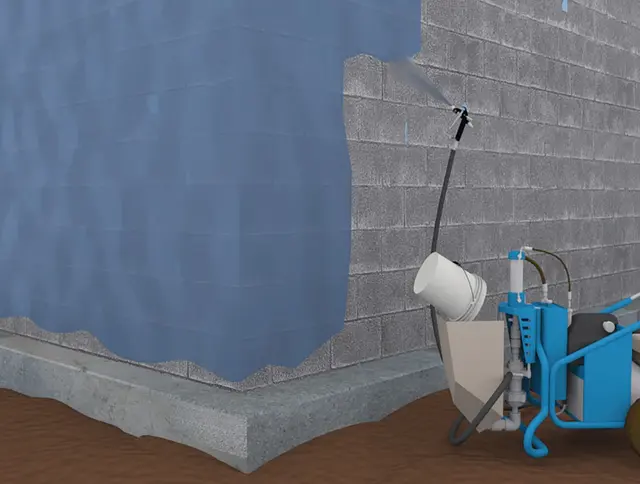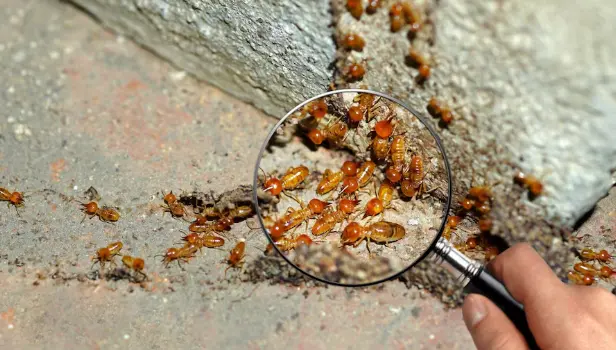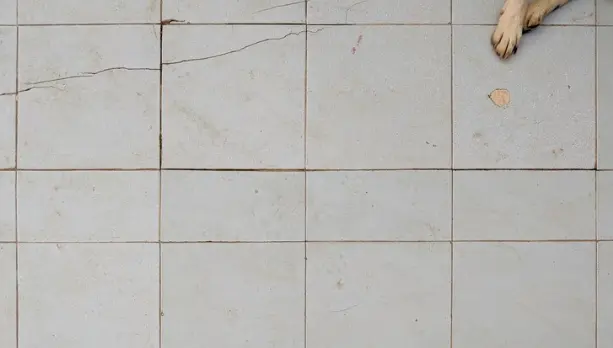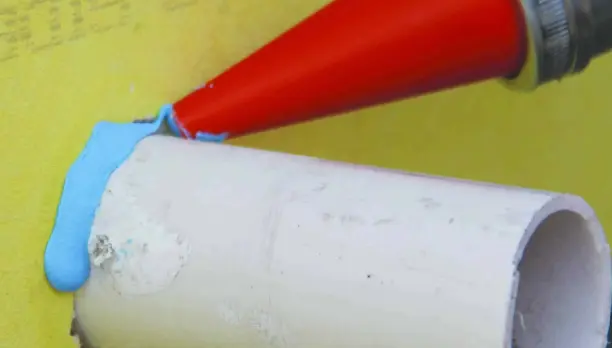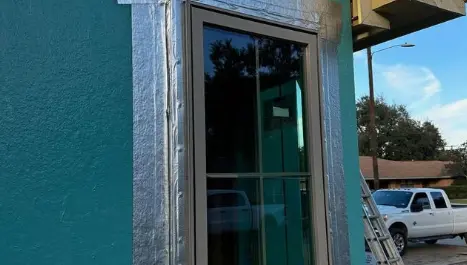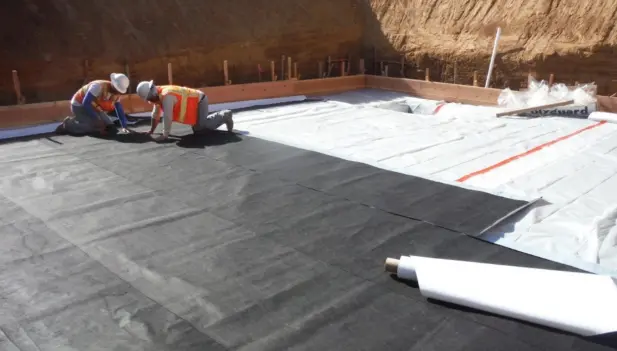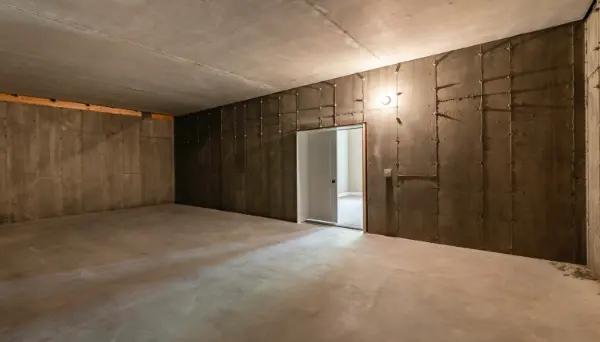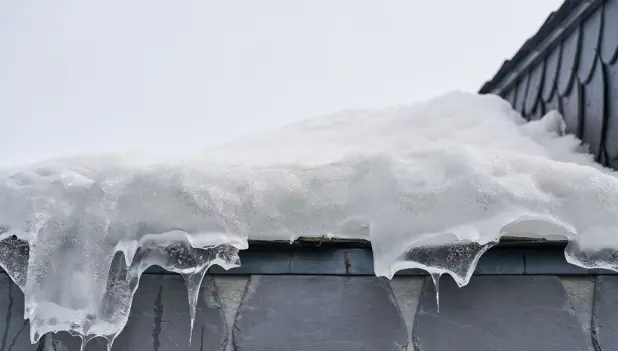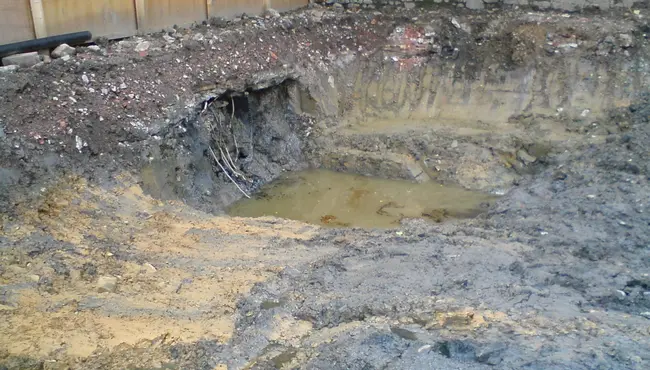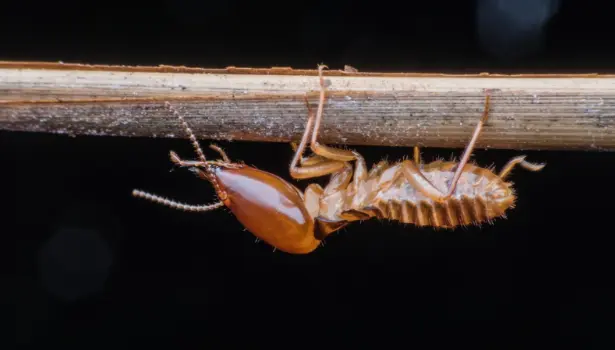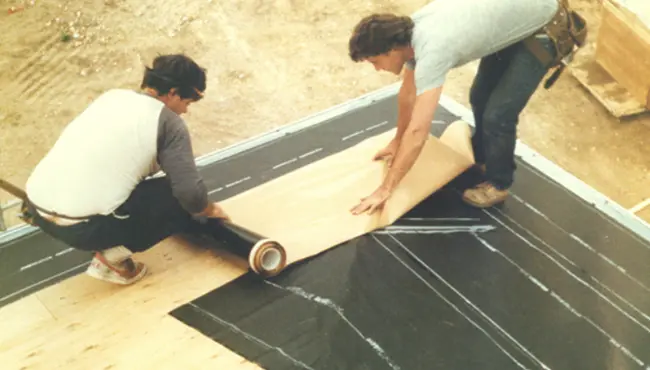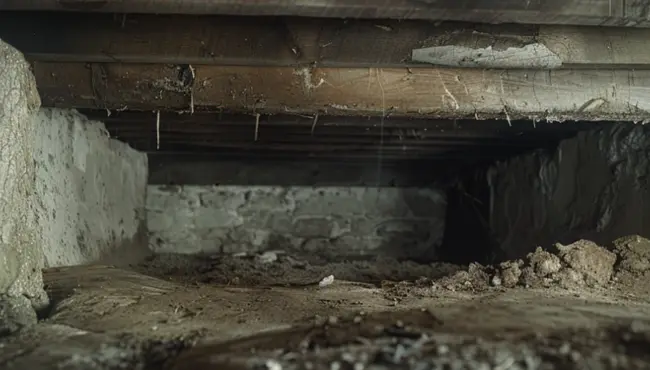Waterproof foundation walls are a vital component of a strong, durable, and safe house. A waterproof foundation resists bending and shear stresses from lateral water and soil pressures. A well-built foundation also supports the house's weight, transferring the house's load to the footing and into the ground, withstanding seismic and wind forces, and providing anchorage. In addition, a quality foundation prevents insect infiltration and provides insulation. A poorly designed foundation without adequate waterproofing can lead to moisture intrusions and significant structural damage, endangering your neighborhood and family.
The American Society of Home Inspectors estimates 60 percent of U.S. homes have wet basements, with 38 percent running the risk of basement mold. Furthermore, water intrusion accounts for 70 percent of construction litigation. Builders and homeowners can minimize these problems by sufficiently waterproofing new basement walls.
Fortunately, Polyguard offers superior foundation waterproofing products that protect against moisture and air infiltrations, significantly contributing to a home’s long-term integrity, safety, and health.
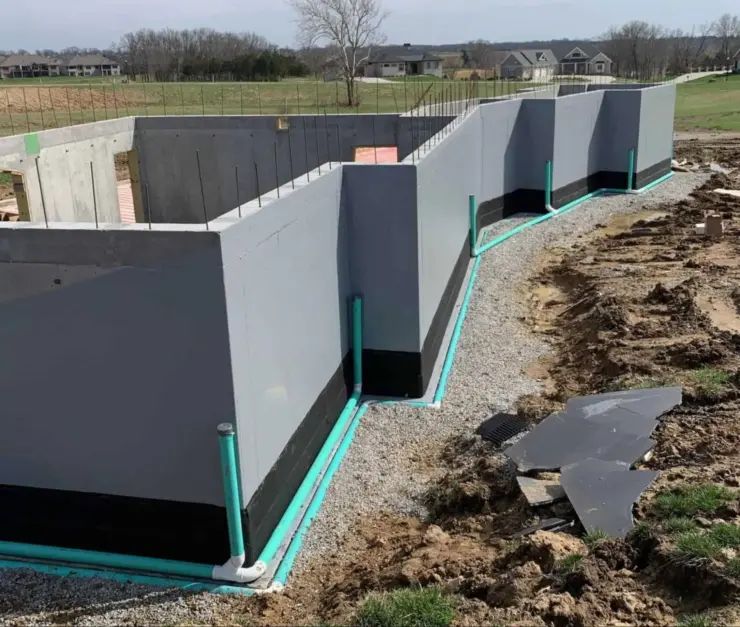
How Water Infiltrates Foundation Walls
Water naturally wants to fill below-grade spaces, whether it's a crawl space or basement, making waterproofing underground walls vital to the long-term integrity of a house.
Water infiltrates below-grade walls through wall penetrations, poor site drainage, door/window/vent openings, concrete cracking/mortar joints and movement, high water tables, flooding, and hydrostatic pressures. All these situations contribute to foundation leaks, leading to complicated and costly repairs. In addition, excess moisture will raise the relative humidity within a home or building, increasing the potential for condensation and unhealthy and damaging mold and other allergens.
Thankfully, by waterproofing new foundation walls, you can limit, if not prevent, foundation water intrusion. Protecting your new home from below-grade moisture inflation involves identifying and addressing potential water transport mechanisms through the foundation wall and applying properly sufficient waterproofing.
Damp Proofing vs. Waterproofing Concrete Walls
Damp proofing aims to stop moisture in the soil from infiltrating the foundation, while waterproofing attempts to keep moisture from the soil and liquids away from the foundation.
The 2021 International Residential Code (IRC) (Section R406) specifies the conditions that require either waterproofing or damp proofing foundations:
- Masonry or concrete foundation walls that retain earth and below-grade enclosed interior spaces and floors require damp proofing from the top of the footing to the finished grade. Permissible damp proofing materials include bituminous coating and acrylic-modified cement.
- Wood foundations require damp proofing for below-grade habitable or usable spaces following Sections R406.3.1 through R406.3.4.
- Precast concrete foundations require damp proofing for below-grade habitable or usable spaces per Section R406.1 (except needed waterproofing by Section R406.2).
What is Damp Proofing?
Damp proofing involves spraying or hand applying a protective coating to the outside of the foundation wall. Damp proofing also requires proper surface drainage and correctly installed drains at the footings to supply adequate and long-lasting protection to a foundation.
Often used in residential construction, it has some significant drawbacks:
- Damp proofing does not seal large cracks or holes
- Careless backfill can damage damp proofing
- Damp proofing does not stand up to hydrostatic pressures
What is Waterproofing?
Like damp proofing, waterproofing requires surface drainage and drainpipe. However, concrete wall waterproofing also involves applying a waterproofing membrane with a dimple drainage board.
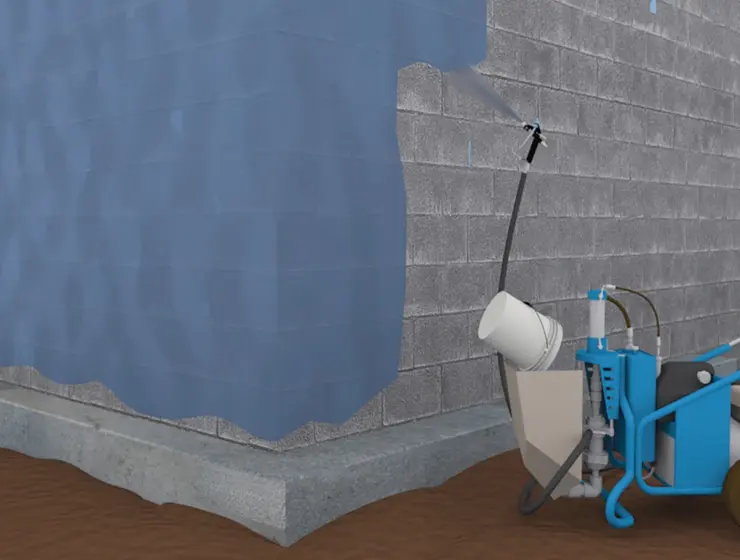
How to Waterproof a Concrete Wall
The best waterproofing for concrete walls protects the foundation from soil and liquid moisture. To optimize protection, apply waterproofing systems to all foundation walls with earth on one side and usable space on the other (including crawl spaces). For added effectiveness, extend waterproofing at least 12 inches onto intersecting walls. For very wet sites, continue the waterproofing on other walls since water may travel through the keyway, along the footing, and into occupied areas.
Tips for Waterproofing Foundation Walls
- Clean the surface of the foundation wall and footing, ensuring they are free of loose materials and reasonably smooth.
- Waterproofing materials do not cover large voids; therefore, you must fill cracks and holes with a non-shrink grout or patching cement.
- Before applying the concrete wall waterproofing membrane, check the manufacturer literature for temperature limitations.
- Only apply membranes on fully cured concrete since water vapor escaping from the concrete can prevent the waterproofing material from bonding.
- Once applied, the waterproofing system will need a drainage mat or insulation to protect it during backfill.
- Instruct workers not to walk across exposed membranes on decks, footings, or other horizontal surfaces since the waterproofing system can be compromised.
Why Waterproof Your New Foundation Wall with
Polyguard Waterproofing Systems?
Polyguard provides two superior waterproofing foundation products to protect against air and moisture infiltration, significantly contributing to a home’s long-term integrity, safety, and health.
Polyguard Below-Grade Waterproofing Systems
Polyguard offers two types of foundation waterproofing systems: membrane and liquid.
Home Stretch™ ICF Waterproofing Membrane
Polyguard designed and engineered Home Stretch™ ICF Waterproofing Membranes specifically for ICF walls (insulated concrete form). They are still applicable to poured concrete and CMUs (concrete masonry units) foundation walls.
Straightforward to handle and install, Home Stretch™ ICF Waterproofing contains a self-adhering, 40 mils thick sheet waterproofing membrane made of a strong, flexible high-density polyethylene (HDPE) facing bonded to a rubberized asphalt waterproofing compound.
To maximize the effectiveness of the waterproofing system, Polyguard suggests using Home Stretch™ in combination with their Detail Tape, Blue Barrier™ Gap Filler, Arroyo™ Outlet Channel, Water Based Liquid Adhesive, Liquid Waterproofing, Arroyo™ Drain Board, and Quick Grip.
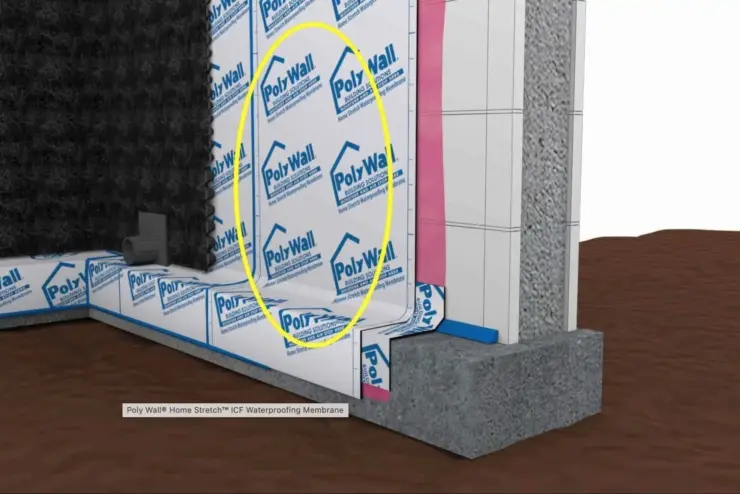
Home Stretch™ Liquid Waterproofing
The design of Polyguard Home Stretch™ Liquid Waterproofing permits its use for only below-grade poured concrete, precast concrete, CMU, and other vertical foundation surfaces exposed to hydrostatic pressure. For complete foundation wall waterproofing, Polyguard advises using Home Stretch™ Liquid Waterproofing with Blue Barrier™ Gap Filler, Arroyo™ Drain Board, Arroyo™ Outlet Channel, Arroyo™ End Outlet Channel System, and Arroyo™ Tee Outlet.
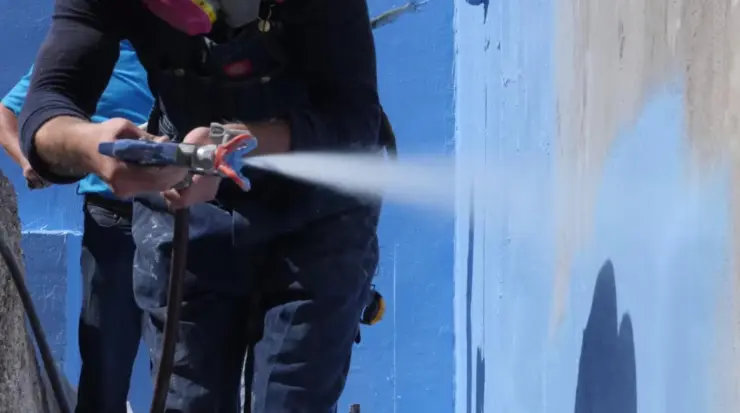
The Best Approach to Waterproofing New Foundation Walls is Poly Wall® Waterproofing Barrier Systems
Applying Poly Wall® below-grade waterproofing systems to any foundation wall with earth on one side and usable space on the other (including crawl spaces) significantly minimizes moisture-related problems to your home. Shielding your house from moisture intrusion down to its foundation will protect its integrity, lessen repair and maintenance, and create a healthy environment.
Contact Polyguard professionals today for more on how to approach waterproofing for new foundation walls.
